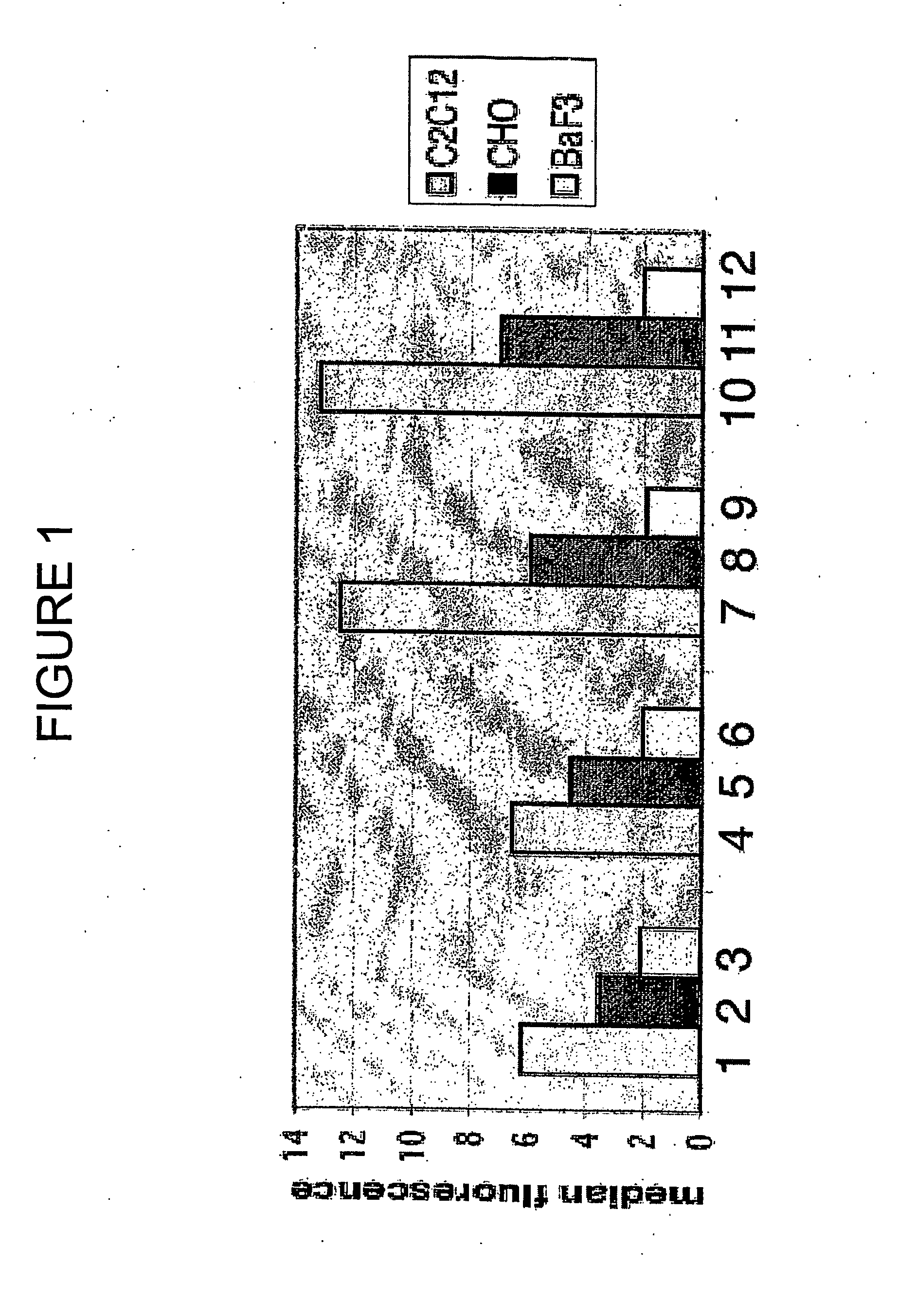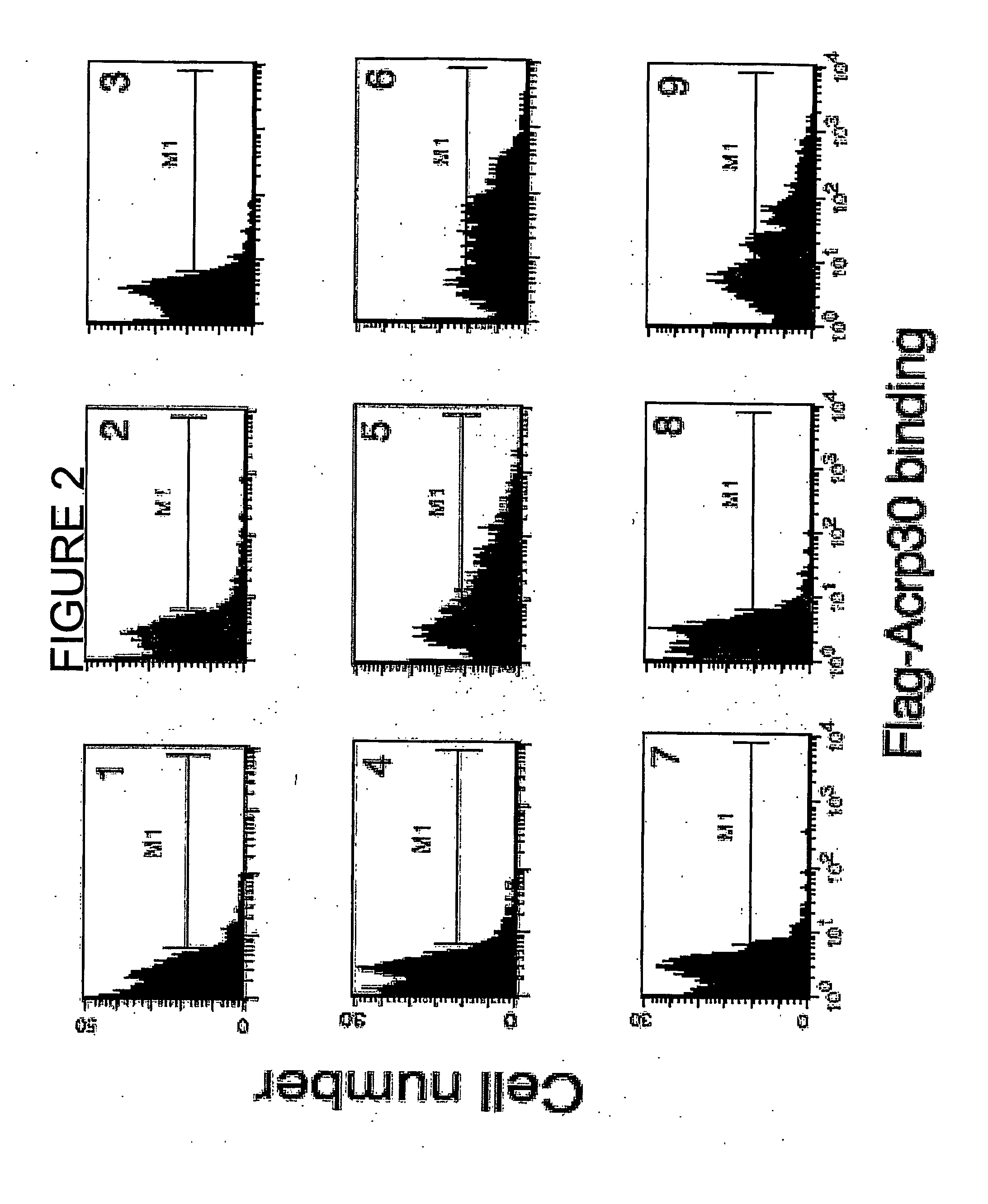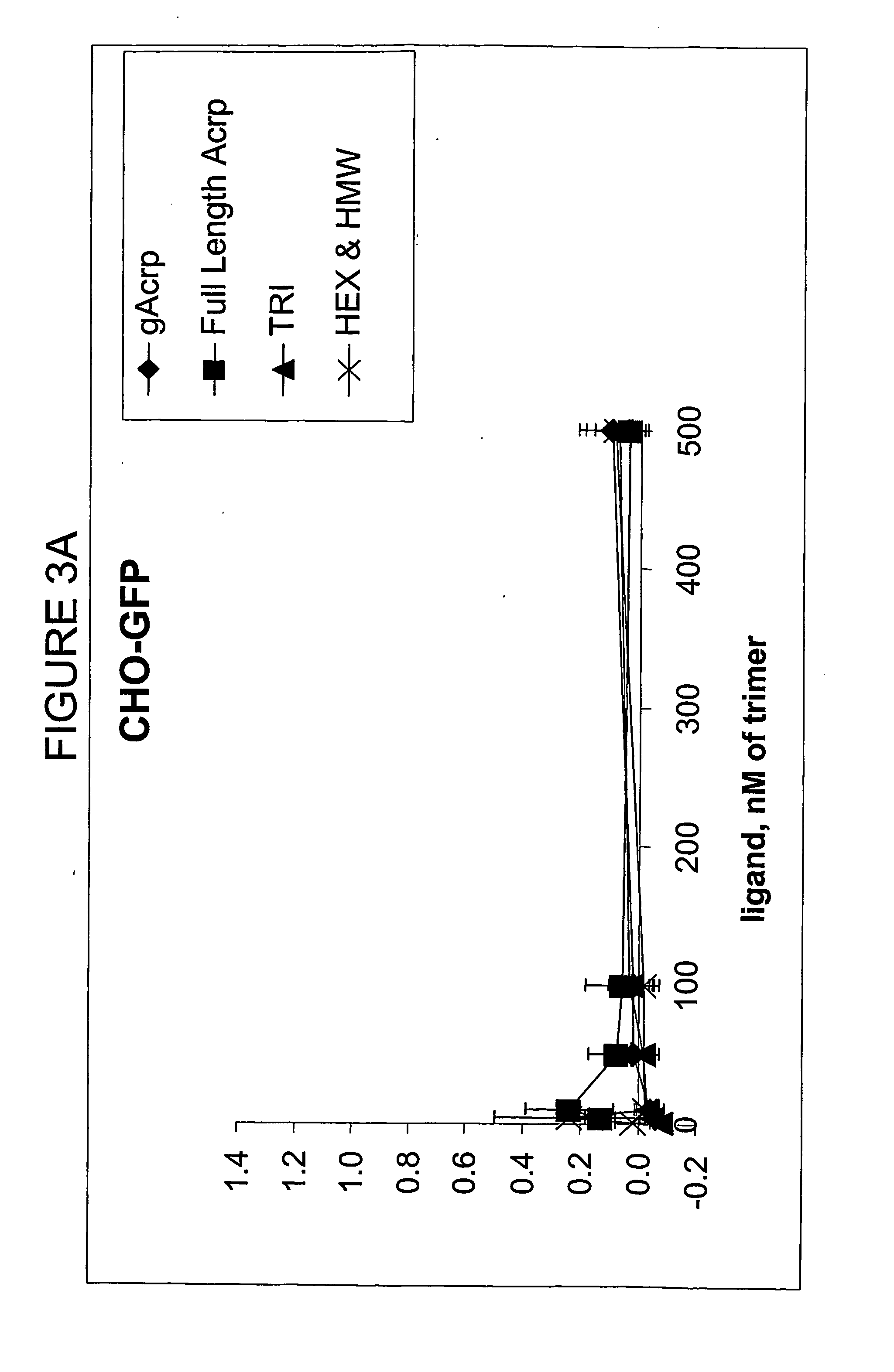Use Of T-Cadherin As A Target
a technology of t-cadherin and target, which is applied in the field of t-cadherin polypeptides, can solve the problems of weight loss, consuming more calories than the body uses, and unable to reduce the number of cells
- Summary
- Abstract
- Description
- Claims
- Application Information
AI Technical Summary
Benefits of technology
Problems solved by technology
Method used
Image
Examples
example 1
Construction and Expression of Tagged Acrp30
[0180] The entire coding sequence for murine Acrp30 (SEQ ID NO: 3) was inserted in the pCDNA3.1 vector. The pcDNA3.1 vector was obtained from Invitrogen (Carlsbad, Calif.). The pCDNA3.1 vector includes the CMV promoter that regulates expression of the cloned gene.
[0181] The coding sequence of the Flag epitope (Asp-Tyr-Lys-Asp-Asp-Asp-Asp-Lys) was inserted by PCR mutagenesis between the predicted signal sequence cleavage site of Acrp30 (amino acid at position 17 of SEQ ID NO: 3) and the amino-terminal region. This construct is denoted 5′FlagAcrp30. The PCR mutagenesis was performed using primers of SEQ ID NOs: 5 to 8. Primers of SEQ ID NOs: 6 and 7 contain the sequence encoding the Flag epitope and Acrp30 sequences, and were used in overlap PCR to introduce the tag after the signal sequence. SEQ ID Nos. 5 and 8 contain Acrp30 sequences at the 5′ and 3′ ends of the gene respectively, and also contain an EcoRI site used for subcloning into ...
example 2
Binding of Flag-Acrp30 Polypeptides to C2C12 Myocytes, CHO Cells and Ba / F3 Cells
[0186] The ability of the Flag-Acrp30 polypeptides comprised in the above supernatants to bind to undifferentiated C2C12 myocytes, to CHO cells and to Ba / F3 cells was tested by Fluorescence-activated cell-sorter (FACS) binding assays.
[0187] Adherent cells (C2C12 and CHO) or suspension cells (Ba / F3) were transferred to serum-free media for two hours and then incubated at 4° C. for thirty minutes to block endocytosis. The cells were incubated in 1% BSA in PBS containing 0.9 mM CaCl2 and 0.5 mM MgCl2 (PBS++) at 4° C. for thirty minutes to block non-specific binding sites. All subsequent steps were done at 4° C. The cells were incubated in a solution of 1:1 conditioned media from HEK cells and blocking solution for two hours, washed twice in PBS++, and incubated for one hour with a monoclonal antibody recognizing the Flag epitope conjugated to the fluorescent dye APC (Phyco Link). The antibodies recognizin...
example 3
Cloning of a Novel Acrp30 Receptor
[0191] 3.1. C2C12 cDNA Library Construction
[0192] The C2C12 cell line was chosen for construction of a cDNA expression library as it binds to unpurified Flag-Acrp30 polypeptides and as it previously has been shown to increase fatty acid oxidation in response to Acrp30 (Fruebis et al., 2001).
[0193] An undifferentiated C2C12 cDNA expression library was made in a bicistronic retroviral vector pBI-GFP. This vector contains the coding sequence of green fluorescent protein (GFP) under the control of an internal ribosome entry site (IRES) (Bogan et al., 2001). Expression of the cloned gene or cDNA insert is proportional to the expression of GFP in individual cells.
[0194] The quality of mRNA was verified by Northern blot analysis for the β-actin gene. After ligation of the reverse transcribed cDNA into the retroviral vector, characterization of the unamplified library revealed approximately 0.5-1×107 independent transformants. By restriction digestion o...
PUM
| Property | Measurement | Unit |
|---|---|---|
| concentration | aaaaa | aaaaa |
| Tm | aaaaa | aaaaa |
| apparent molecular mass | aaaaa | aaaaa |
Abstract
Description
Claims
Application Information
 Login to View More
Login to View More - R&D
- Intellectual Property
- Life Sciences
- Materials
- Tech Scout
- Unparalleled Data Quality
- Higher Quality Content
- 60% Fewer Hallucinations
Browse by: Latest US Patents, China's latest patents, Technical Efficacy Thesaurus, Application Domain, Technology Topic, Popular Technical Reports.
© 2025 PatSnap. All rights reserved.Legal|Privacy policy|Modern Slavery Act Transparency Statement|Sitemap|About US| Contact US: help@patsnap.com



